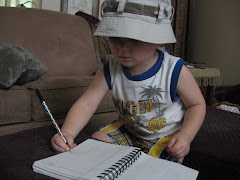Florian, D. (2012). unBEElievables. New York , NY : Beach Land
Dr. Sylvia Vardell, in her book Poetry Aloud Here: Sharing Poetry with Children in the Library (2006, American Library Association) says, "This seems to be a golden age for publishing poetry for children, with more variety of poets and poetry formats than ever." This particular volume of poetry published last year by Douglas Florian falls into one of my favorite categories - trade books.
Trade books are books written for children that can be used
in their content classes – math, science, social studies, art, etc. The books help present information in
interesting, eye-catching ways. I’ve
been using trade books with my students for years. However, a new genre for me in trade books is
poetry.
Douglas Florian has written an amazing book that is all
about honeybees in his book unBEElievables. The poems are short, they rhyme, and they have
easy-to-follow rhythms which makes them fun to read. The topics of the poems cover everything
students might find interesting about bees, and the paintings by Florian
provide eye-catching, complex images for exploring. But what a unique feature of this
book that I personally love is the fact that each poem is paired with a prose
paragraph that gives additional facts and information about the topic covered
in the poem.
I can see using Florian’s book with a wide range of
ages. While the poems and text are easy
enough to be understood by my six-year-old (who loves Bee Movie and would already have some background in what bees are
like and what they do), I can envision using it with my
middle or high school students when we use a multi-page piece from a science article
about bees that covers all the same topics as the poems. The poetry would be great for helping the
older reader visualize what is being talked about in the article.
I would introduce the book by using the poem “Bee Anatomy”:
Lovely
legs,
Lovely hue.
Lovely long
Antennae,
too.
Lovely
eyes,
Lovely
wings.
But ouch!
How in the end
It stings!
This poem is accompanied by a paragraph describing bee
anatomy as well as a painting that has bee parts labeled. Other poems could be used to help students
understand important aspects of bees and what they do. Poems include many topics such as:
“Queen Bee”
“Drone”
“Worker
Bees”
“Honey”
“Pollen”
“Waggle
Dance”
Altogether there are 14 poems, a “BEEbliography,” and web
addresses for further reading. Bright,
colorful, and informational, this book should be able to find many uses in the
science classrooms of elementary schools, and even those of secondary
students. Even though it has been
labeled as being for ages 5-8, it will find a much wider appeal.







